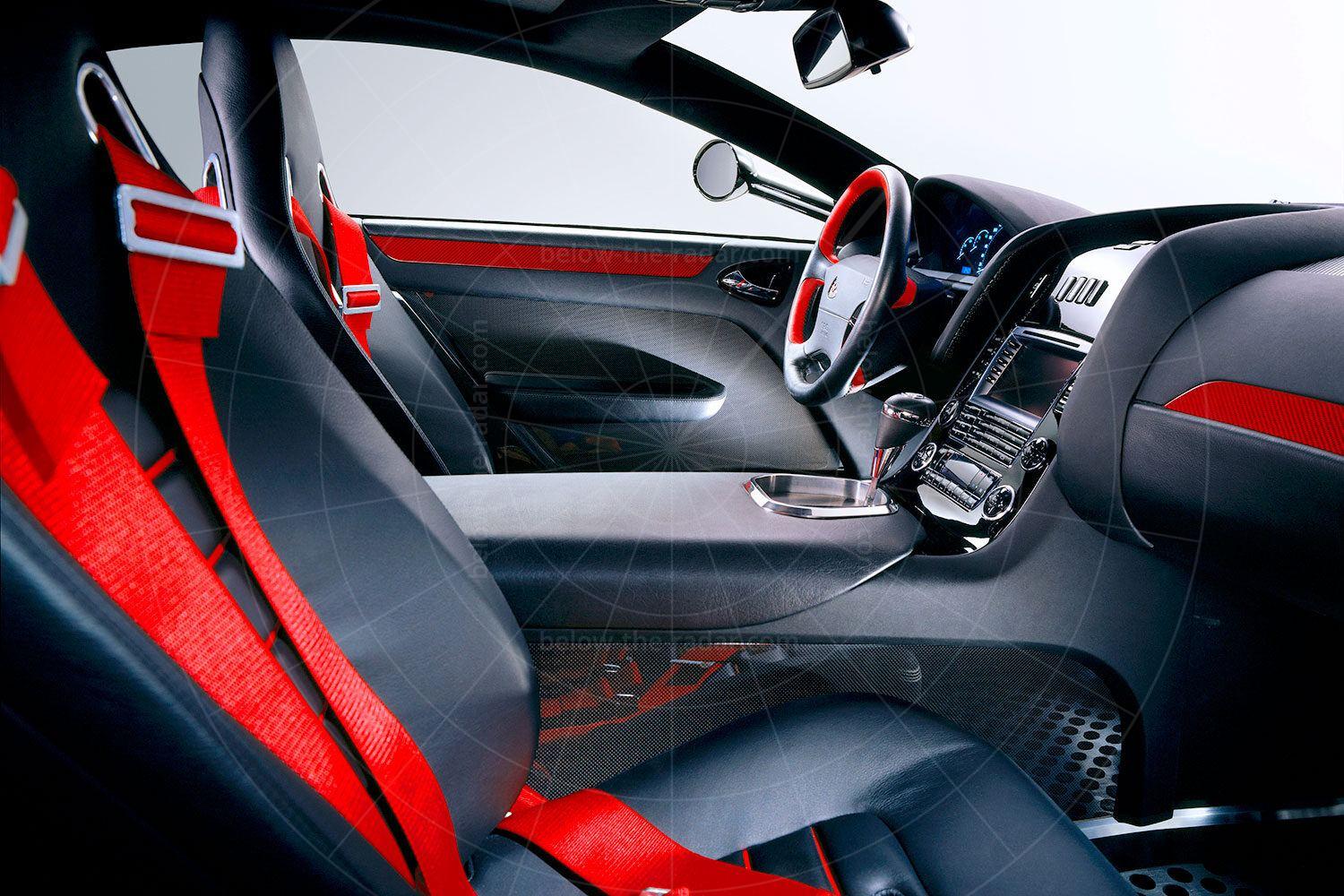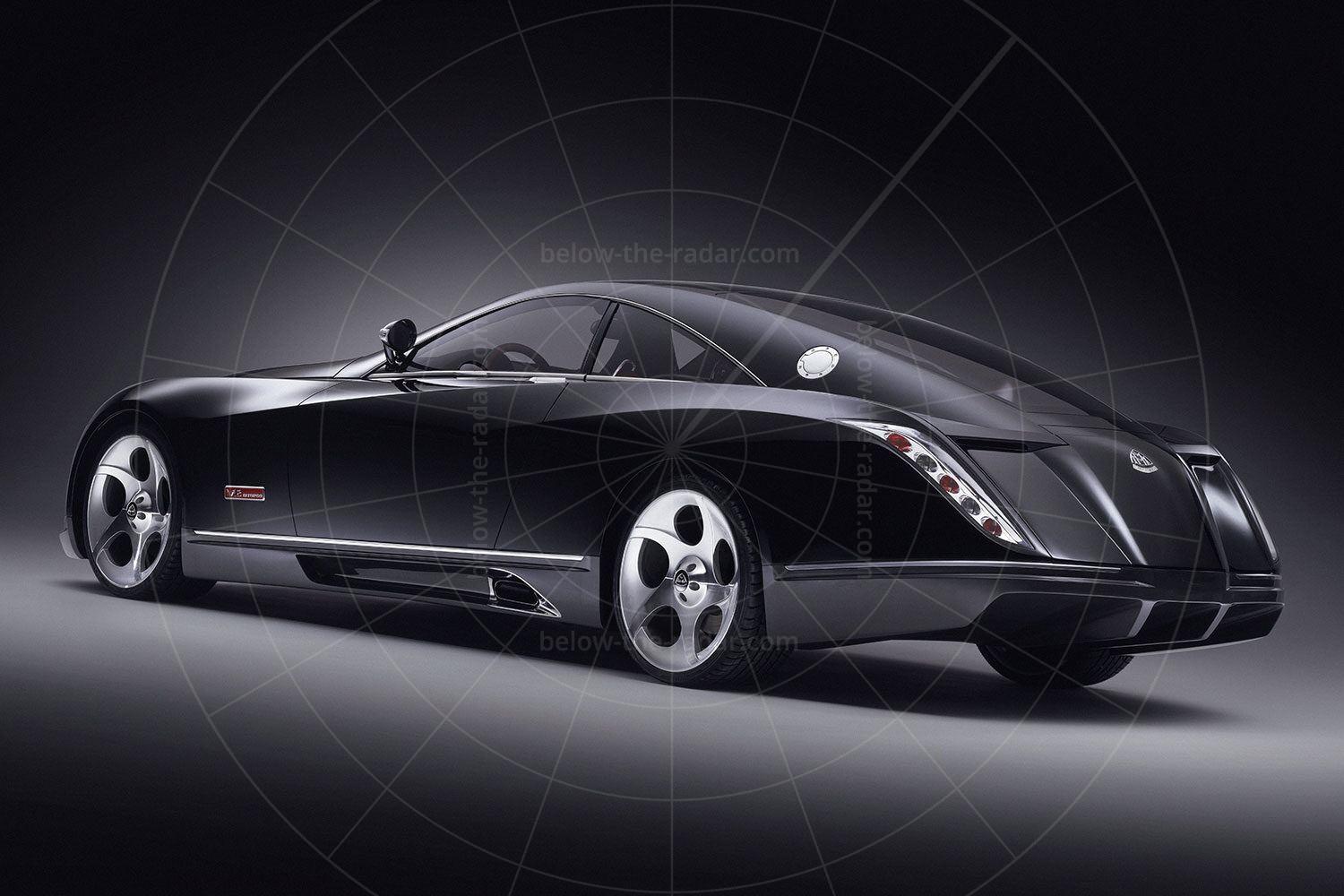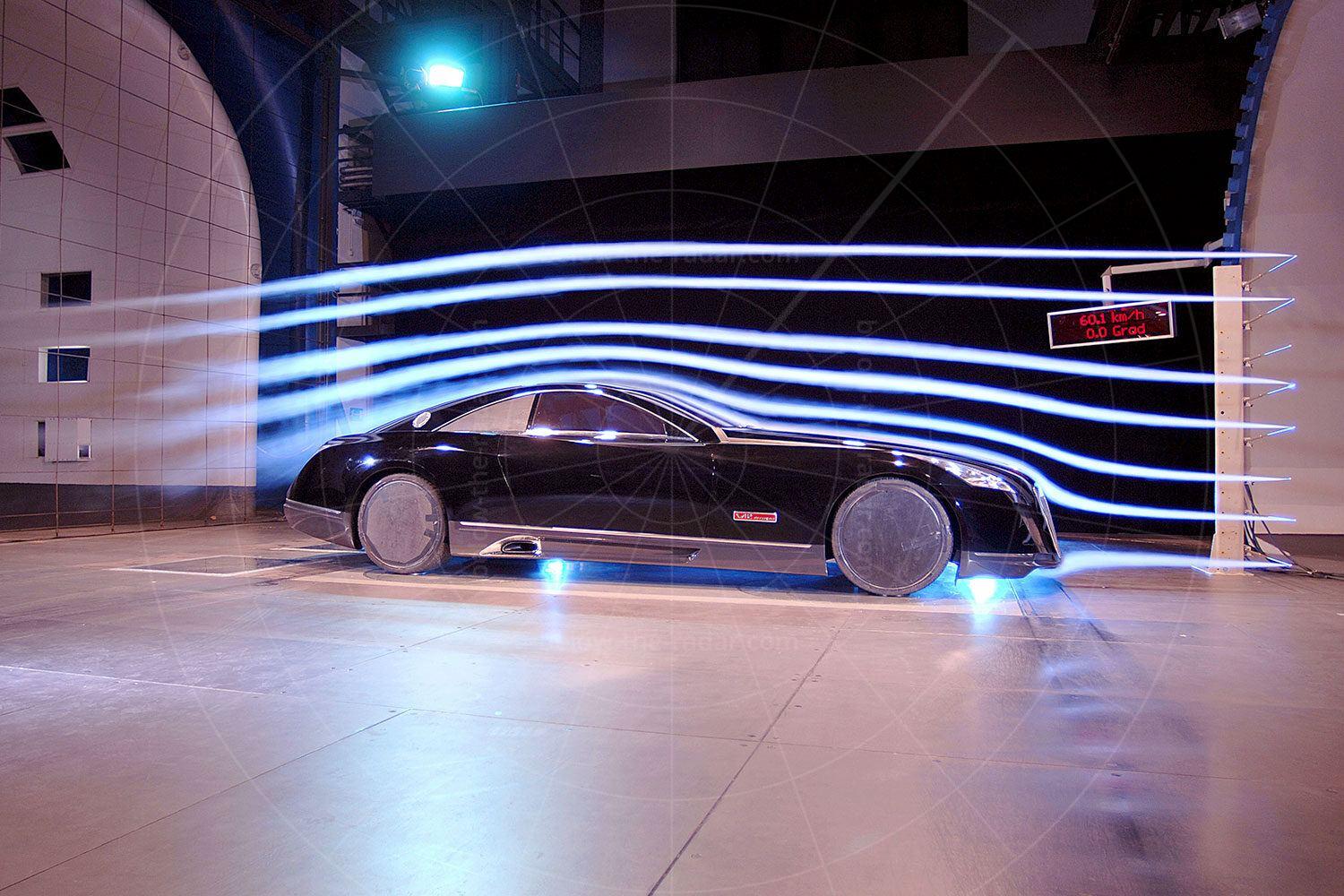While it looks like a refugee from a Batman film, the Exelero was never designed for a starring role on the silver screen. Instead it was designed as a mobile test bed for high-speed tyres, bankrolled by tyre maker Fulda and based on the platform of the Maybach 57 limousine. This wasn’t the first time that Fulda had teamed up with the Maybach marque, nor was it the first time that the tyre maker had built a vehicle specially for the purpose of demonstrating its products.
Back in 1938, Fulda commissioned Frankfurt-based coachbuilders Dörr & Schreck to build a one-off version of the Maybach SW38, to enable high-speed tyre testing on Germany’s autobahns. That car was completed in July 1938, just before the outbreak of World War 2. During the hostilities the car disappeared and was never seen again. In the meantime, Fulda commissioned a madly modified Porsche 911 (by Gemballa) to demonstrate its 1996 range.
When an all-new line up of tyres was unveiled in 2005, the company wanted to pull out all the stops and commission something unique. As the Maybach marque had been revived by this point, the decision was made to team up with DaimlerChrysler, custodians of the Maybach brand, to build a show-stopping car that had as much go as it did show. But time was tight; the plan was to unveil the car in just two years, at the 2005 Frankfurt motor show, having already run high-speed tests beforehand. Two years may sound a lot, but for a fully running, record-breaking one-off to be built in that time is going some. The solution lay in building the chassis, interior and bodyshell separately and concurrently, the work being undertaken by specialist coachbuilder Stola, in Italy.
The Exelero was completed by April 2005, ready for high-speed testing. It had been honed in the wind tunnel and refined ever further, but finally, in May 2005, the Exelero clinched the world record for a car running on standard tyres. At 351kmh (just over 219mph), it was capable of maxing Fulda’s all-new road car tyre.
The whole Exelero exercise was carried out so that Fulda could showcase its new Carat Exelero tyres range, the largest of which had a diameter of 23 inches. The tyres were capable of running at speeds of up to 350kmh (219mph), so the Exelero’s top speed needed to match this. But while the standard Maybach range was hardly lacking in terms of available performance, something special would have to be done to achieve the level of speed that Fulda required.
In a bid to extract as many horses as possible from the twin-turbo V12 powerplant, its capacity was increased from 5.6 to 5.9 litres. That liberated an extra 150bhp or so, taking the tally up to 700bhp, which was enough to take the Exelero up to its 219mph target speed. To make sure the car was capable of achieving 219mph it was driven around the Nardo test facility, where it notched up a maximum velocity of 351.45kmh (219.6mph). However, it wasn’t capable of attaining such velocities in the form shown here. To improve aerodynamics and add a few kilometres per hour to the top speed, the wheels were enclosed with panelling, adding around 4km/h in the process.
Despite the massive power output, only the rear wheels were driven; four-wheel drive would have added too much weight to a car that already tipped the scales at a hefty 2660kg. What was fitted was a very capable set of brakes; if you’re driving beyond the double-ton you want to be able to scrub the speed in a hurry. That’s why there were vented discs all round, each equipped with four-piston callipers; naturally there was anti-lock and ESP tech too. And just to make sure that the power was transmitted to the road safely as possible, there was double-wishbone suspension up front and a multi-link rear design.
While the mechanical side was clearly crucial to getting the car up to the required velocities, its design and construction were also important. To come up with a suitably menacing look, Fulda teamed up with the students of Pforzheim Polytechnic’s Department of Transport Design. It wasn’t the first time the two had collaborated; in the mid-1990s they had teamed up to create a futuristic truck to showcase Fulda’s products. This time round, the work of 24-year old Fredrik Burchhardt was chosen as the basis for the project; his menacing study was just what Fulda reckoned it needed to grab plenty of column inches in the world’s media.
Despite the Exelero being even longer than the Maybach 57 that donated its platform, it featured seating for just two people. Italian specialist vehicle maker Stola built the car at its base in Turin, and by the summer of 2005 the car was ready to be unveiled. Although there were few definite requirements for the exterior styling (the main one being that no retro suggestions would even get out of the starting blocks), there were some very specific demands where the interior was concerned. On the list of required materials were natural leather, neoprene and coated punched aluminum sheet along with carbonfibre finished in glossy black and red. Whether it looked classy or like a tart’s boudoir is a matter of interpretation…
| Vital statistics | |
|---|---|
| Debut | Frankfurt 2005 |
| Designer | Fredrik Burchhardt |
| Engine | Front-mounted, 5908cc, twin-turbo V12 |
| Transmission | 5-speed auto, rear-wheel drive |
| Power | 700bhp at 5000rpm |
| Torque | 752lb ft at 2500rpm |
| Top speed | 219mph |
| 0-60mph | 4.4 seconds |























